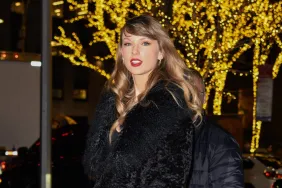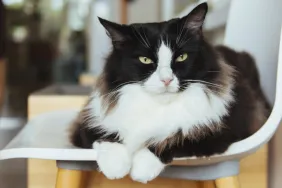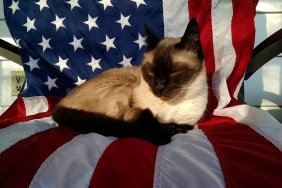In 1977, a young man named Tom Otterness adopted a shelter dog, tied him to a fence, and shot him to death. He captured the entire episode on film, ran it on a continuous video loop, and called it art. Otterness was never charged with a crime, and in fact, went on to commercial success and critical acclaim, with works in the New York Museum Of Modern Art and the First Lady’s Garden at the White House.
In September 2011, the San Francisco Arts Commission awarded Otterness $750,000 to create a sculpture series for the city’s underground subway system. Residents familiar with the artist’s background expressed outrage, and yesterday, the mayor and the Commission (claiming it was unaware of Otterness’s early film) rescinded the offer.
It all got me thinking. Would I ever consider hiring Otterness as a sculptor or displaying his work? Is his single, decades-old act of betrayal and cruelty relevant to the man — and artist — he is today? When do we forgive? When do we move on? Are we not a country of second chances?
In 2008, Tom Otterness gave this statement:
“Thirty years ago when I was 25 years old, I made a film in which I shot a dog. It was an indefensible act that I am deeply sorry for. Many of us have experienced profound emotional turmoil and despair. Few have made the mistake I made. I hope people can find it in their hearts to forgive me.”
To my knowledge, Otterness didn’t torture the dog or cause him prolonged physical suffering. So was his act somehow more terrible than the lethal injections millions of shelter animals receive each year? If the decision were mine, would I withhold support for an artist who, in his troubled and unsteady youth, had seen fit to shoot a dog?
Yeah, I would. And while I don’t advocate locking Otterness up and tossing the key, I find his performance offensive enough that even 34 years later, I’d go with another sculptor. The killing was a conscious, deliberate, and reprehensible choice. (Of course, many say shelters make a conscious choice to euthanize rather than find homes for their animals; unlike Otterness, however, I don’t believe they are killing in the name of self-expression.)
But with that kind of logic, where do I draw the line? Can I only consider artists who subscribe to a certain set of ethics? Must I see only vegetarian doctors? Employ only vegan plumbers?
Cows aren’t dogs, I realize, and dogs (as Michael Vick supporters like to remind me) aren’t people. In other words, it’s socially acceptable, even laudable, to slaughter certain species but not others — especially when the killing provides food (or leather or fur). It’s ok to force feed chickens and contain them in wire cages prohibiting even minimal movement, yet we’re outraged to see a Terrier in similar conditions — morbidly obese or chained to keep from roaming.
Shooting a dog is an “indefensible” act, but hunting a moose is not. Why?
There is nothing innately present in certain animals to qualify them as better or more worthy of our protection. In our culture, we adopt some and slaughter others; dogs are sacred, cows are commodities. But in other cultures, the reverse is true. There’s no inherent morality in saving a Chihuahua over a chicken, any more than there is in saving a boy child over a girl.
I have not watched Otterness’s film, but I’m fascinated by the uproar his selection prompted. Why are we not as enraged over the millions of animals still brutalized in the name of art — or entertainment or education or science — every day? Where is that same indignation on behalf of circus elephants, chimps used for medical research, polar bears confined to Florida zoos?
We’ve become complacent, unfazed by factory farming or even current euthanasia statistics. We’re no longer shocked by the numbers of animals who arrive at shelters each year… and never leave. It’s easy, I suppose, to impersonalize the millions. One scared dog, freed from the city pound only to be shot dead in the name of art, is more difficult to forget.









